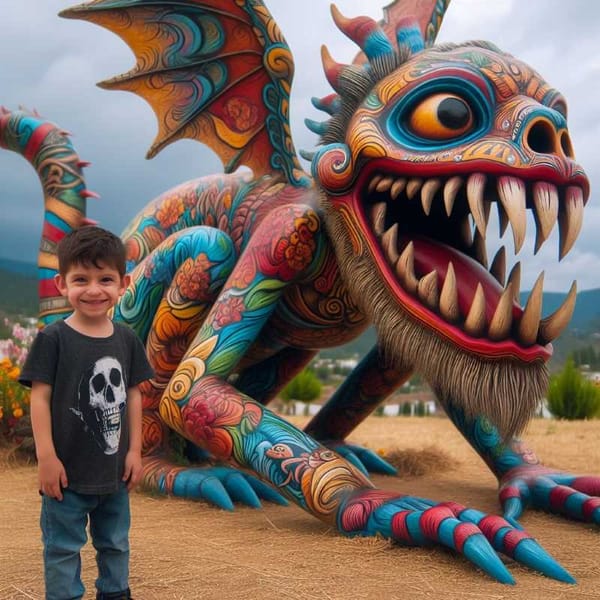How Space Exploration Shapes Our World
Mexico's National University is launching its own space program with an eye on practical applications. Their CubeSat project aims to use satellites for fire prevention and urban planning.

Due to the importance of space flights, the National University is increasingly involved in these topics. In addition to the creation, a few years ago, of the aerospace engineering degree, and the UNAM University Space Program (PEU), there are specific proposals for of the country, for example the Ixaya Mission, a satellite project for the prevention and fire management in our territory.
The above, according to the member of the PEU, Francisco Moisés García Hernández, who assures that in particular the Program (whose mission is to coordinate efforts and promote collaboration between university experts who work in different academic entities) has a catalog of projects that have to do with the development of space science and technology, “with the purpose of giving them visibility and promoting links.”
The Ixaya Mission, headed by the Program in collaboration with the Faculty of Engineering, as well as the Institutes of Geophysics, Geography and Astronomy, seeks to put into orbit a CubeSat-type nanosatellite of its own creation, which would produce specialized images in Mexico that could be used for the planning of public actions and policies in the environmental, urban and civil protection fields, through an early fire warning system.
Increasingly, collaboration between entities dedicated to space is strengthened to generate basic science and applications for our country, García Hernández emphasizes.
The university expert asserts that most of the incursions that have been carried out by various nations have had great scientific and technological contributions. Therefore, it can be expected that these developments will continue to have an impact on our daily lives.
Beyond our atmosphere
On the occasion of the International Day of Manned Space Flight, which is commemorated today, April 12, the specialist emphasizes regarding space innovations that are used all the time today, such as geolocation systems; GPS, Galileo or GLONASS; in transportation those for de-icing airplanes; clothing materials, such as thermal-regulating ceramic coatings, originally designed for heat shields on spacecraft re-entering Earth; water purification and filtering procedures, created to reuse water in spacecraft, etc.
According to the United Nations, “space science and technology contribute crucially to achieving sustainable development goals and increasing the well-being of States and peoples.”
The beginnings of manned space flights, recalls the head of Communication of the PEU, have as a precedent trips that did not go beyond a few tens of meters from the ground, such as the one organized by the brothers Joseph and Étienne Montgolfier, in 1783, where they set up a sheep, a duck, and a rooster in one of the first hot air balloons.
Subsequently, the pioneer crew members to reach space, that is, to overcome the Kármán line, as the limit between the atmosphere and space is known, were small animals, such as mice, fruit flies, dogs, even monkeys, launched by the Soviet Union and the United States on suborbital flights, to investigate the impacts of space conditions on living beings.
In the 1950s (after World War II), the “fever” to take humans out of the Earth's atmosphere was increasing, driven by the early stages of the Cold War; At the end of this decade, manned orbital flights began with the dog Laika, which in 1957 became the first living being to orbit the Earth aboard the Sputnik-2 spacecraft of the then Soviet Union.
Yuri Gagarin, Soviet cosmonaut, became the first human being to go to outer space, on April 12, 1961. He was followed by the Americans Alan Shepard and John Glenn, who orbited the Earth on May 5, 1961, and on May 20. February 1962, respectively.
Subsequently, Valentina Tereshkova positioned herself as the first woman to travel to space aboard the Vostok 6 spacecraft, which circled the Earth 48 times over three days in 1963. Likewise, after numerous flight milestones were reached around the world, manned space, American astronaut Neil Armstrong was the first human being to set foot on the lunar surface, on July 20, 1969, as part of the Apollo 11 mission.
García Hernández points out that in space there are two particular conditions that do not exist on Earth: microgravity and high-energy cosmic rays, which allow unique conditions to carry out scientific research and technological development beyond our atmosphere.
Metal alloys, for example, are different when they are carried out in space environments, then new materials are obtained, with properties different from those of terrestrial manufacturing. Something similar happens in other fields: the behavior of bacteria or the growth of plants is different in microgravity conditions, so interesting contributions can be made in the area of chemistry and pharmacy.
According to the expert, there is duality in the use of technology, since satellite images can be used to prevent fires or monitor the sargassum that reaches the beaches, but also for surveillance and espionage.
For this reason, the United Nations Organization works through “the United Nations Office for Outer Space Affairs (UNOOSA), mainly responsible for promoting international cooperation regarding the use of outer space for peaceful purposes,” establishes the organization.
More participants
Currently, the university student says, ROSCOSMOS (the Russian Space Agency) no longer has the monopoly on manned flights to the International Space Station (ISS). Now new players are joining in, including the American companies SpaceX, which currently has the Dragon capsule, capable of taking astronauts to the ISS, and Blue Origin, an aerospace transportation company, which has among its objectives suborbital and orbital flights for official United States missions and private voyages, including space tourism.
This represents, García Hernández asserts, a paradigm shift that modifies the economic dynamics and technological development of those that are manned.
Joining the Russians and Americans are the Chinese, who in addition to carrying out space flights with people, have their own station in orbit, the Tiangong Space Station. Indians, who plan to have theirs before 2035, have also joined this sector; To this end, they have developed a robust space program for decades and, recently, the first tests of the Gaganyaan family of rockets have begun, with the capacity to put manned spacecraft into orbit.
With the purpose of landing on the moon, NASA's Artemis program is also carried out, in which multiple international actors collaborate, whose objective is for humanity to return to the Moon. In 2022, the Artemis I mission was carried out, the first uncrewed flight test of the Space Launch System (SLS) rocket and the Orion spacecraft, which orbited the Moon and returned to Earth after 25 days; Likewise, at the end of 2025, Artemis II will be carried out, which will be the pioneering manned mission of the program that paves the way for the trip of the first woman and another person, the first person of African descent, to our natural satellite.
Because crewed transfers to Mars would be longer, research is also being carried out on the psychological impact caused by the isolation that future travelers will face by carrying out analogous missions, where groups of meticulously selected people are isolated in controlled environments for periods ranging from months to years, in which they are monitored to learn about human coexistence and the development of important skills and knowledge for those future missions. This allows us to continue learning aspects of ourselves, considers García Hernández.
On the occasion of Gagarin's flight, a historic event that opened the way to space exploration for of humanity, the UN General Assembly approved the International Day of Manned Space Flight on April 12.




